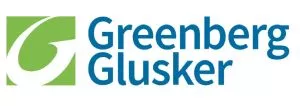The 18-month clock is now ticking for businesses to comply with California's Senate Bill (SB) 343, also known as the "Truth in Recycling" law, which addresses permissible recyclable claims.
In 2021, California passed SB 343, which creates stricter requirements for use of the familiar "chasing arrows" symbol or any other indicator of recyclability on products and packaging sold in California.
SB 343 prohibits labeling a product or package in a way that indicates it is recyclable unless it meets certain criteria.To be "recyclable" under SB 343, a product or package must be made from a material type and form that is (1) "collected for recycling by recycling programs for [California] jurisdictions that collectively encompass at least 60 percent of the population of the state" and (2) "sorted into defined streams for recycling processes by large volume transfer or processing facilities" that "serve at least 60 percent of recycling programs statewide."Essentially, for manufacturers and others selling products or packaging labeled as recyclable, the product or packaging must be collected by curbside recycling programs that serve 60% of the California population and be accepted by recycling facilities that serve 60% of the state population.If the material is not recyclable at this dual 60% threshold, then no claim or indication of recyclability may be legally made, including use of the chasing arrows symbol.
This is a tighter standard than the current one, which is based on less-specific federal standards requiring availability of recycling facilities to 60% "of consumers or communities where the item is sold." Additionally, under the current federal standards, a claim of recyclability may be qualified with language indicating limited recyclability if recycling is available to less than 60% of the consumers or communities where the item is sold, but under the new SB 343 standard in California, not even a qualified claim of recyclability may be made unless the dual 60% threshold is met.
SB 343 directed California's Department of Resources, Recycling, and Recovery (CalRecycle), the agency that oversees recycling programs, to conduct and publish data on the materials collected, sorted, sold, or transferred for recycling in California. Manufacturers and other interested parties then can use the data to determine whether recyclable claims can be made in compliance with the law. Manufacturers are required to comply with SB 343's requirements 18 months after CalRecycle's final Material Characterization Study is published.
On April 4, 2025, CalRecycle published its final Material Characterization Study, officially starting the 18-month countdown for businesses to comply with the new requirements. The compliance date is October 4, 2026. Businesses who distribute products to California and make claims of recyclability should make sure to carefully review the Material Characterization Study and develop a compliance plan now.
The content of this article is intended to provide a general guide to the subject matter. Specialist advice should be sought about your specific circumstances.




